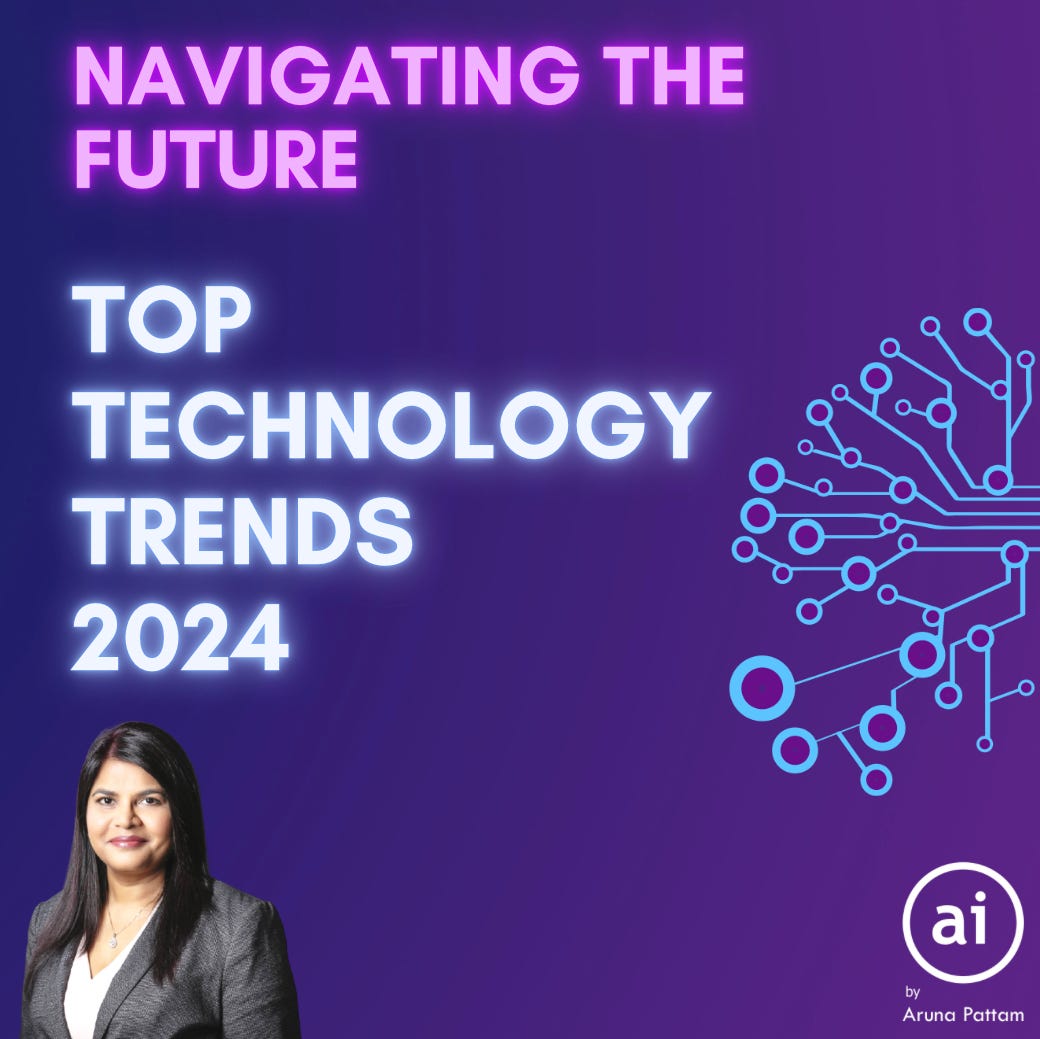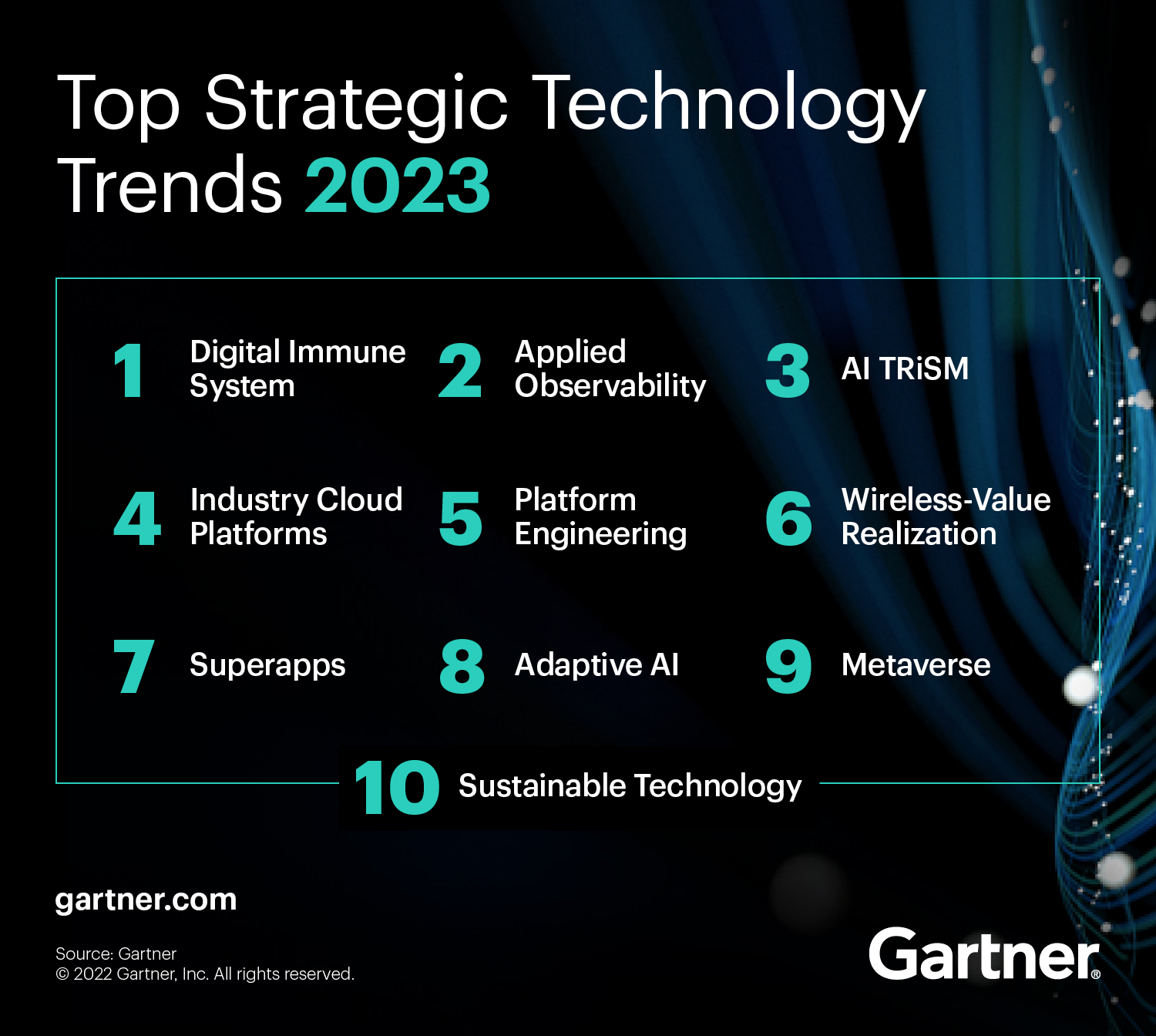 Horizon Scan: Top Tech Trends Shaping Our World in June 2025
Horizon Scan: Top Tech Trends Shaping Our World in June 2025
June 2025. A time that once felt like science fiction is now just around the corner. The technological landscape is in constant flux, and predicting the future with absolute certainty is impossible. However, by analyzing current trajectories and emerging patterns, we can paint a plausible picture of the dominant tech trends that will be shaping our lives, businesses, and societies in the middle of 2025. This article delves into the key areas of innovation, highlighting the advancements, challenges, and potential impacts of these transformative technologies.
1. The Ubiquitous AI Ecosystem: Beyond the Algorithm
Artificial Intelligence (AI) will no longer be a standalone technology but an interwoven ecosystem deeply embedded in every facet of our existence. We’ll move beyond the hype of general AI towards more specialized and practical applications.
- AI-Powered Automation 2.0: While automation has been a buzzword for years, in 2025, we’ll see a far more sophisticated level of AI-driven automation. This goes beyond simple robotic process automation (RPA) to encompass cognitive automation, where AI systems can learn, adapt, and make decisions in real-time, significantly impacting industries like manufacturing, logistics, and customer service. Expect to see “AI Co-pilots” integrated into professional workflows, assisting with complex tasks, analyzing data, and providing intelligent recommendations, effectively augmenting human capabilities rather than replacing them entirely in many roles. The rise of low-code/no-code AI platforms will also democratize AI development, allowing businesses of all sizes to implement customized AI solutions without requiring specialized expertise.
- Personalized AI Companions: The concept of a digital assistant will evolve into a personalized AI companion that understands your needs, preferences, and even your emotional state. These AI entities, powered by advanced natural language processing (NLP) and affective computing, will manage your schedule, provide personalized recommendations, offer emotional support, and even help you learn new skills. Ethical considerations regarding data privacy, bias mitigation, and the potential for over-reliance on these companions will be paramount. Imagine an AI tutor that adapts its teaching style to your individual learning preferences, or an AI health coach that provides personalized fitness and nutrition plans based on your biometric data and lifestyle.
- AI in Healthcare: Predictive and Personalized: AI will revolutionize healthcare, moving from reactive treatment to proactive prevention and personalized medicine. AI algorithms will analyze vast datasets of patient information, including genomic data, medical records, and lifestyle factors, to predict disease risk, diagnose illnesses earlier, and develop personalized treatment plans. Expect to see AI-powered diagnostic tools that can detect subtle anomalies in medical images, robotic surgery systems that enhance precision and minimize invasiveness, and AI-driven drug discovery platforms that accelerate the development of new therapies. Ethical considerations around data security, algorithmic bias in healthcare, and the potential for dehumanization of patient care will require careful attention.
2. The Metaverse: Beyond Gaming and Social Media
The Metaverse, the immersive digital world, will mature beyond its initial focus on gaming and social media, becoming a platform for a wider range of applications.
- Enterprise Metaverse: Businesses will increasingly leverage the Metaverse for training, collaboration, and product development. Imagine virtual training simulations for complex tasks, collaborative design environments where teams can work together on 3D models in real-time, and virtual showrooms where customers can experience products and services in an immersive way. The Enterprise Metaverse will require robust security measures, seamless integration with existing business systems, and the development of new user interfaces and interaction paradigms.
- Digital Twins and the Industrial Metaverse: Digital twins, virtual representations of physical assets, will become increasingly sophisticated and integrated into industrial operations. The Industrial Metaverse will allow businesses to monitor and control their physical infrastructure remotely, optimize processes, and predict potential failures. Imagine using a digital twin of a factory to simulate different production scenarios, or using a digital twin of a city to optimize traffic flow and energy consumption.
- The Evolution of Virtual Real Estate: The concept of virtual real estate will continue to evolve, with increasing demand for virtual land and properties in popular Metaverse platforms. We’ll see the emergence of sophisticated virtual economies, with virtual businesses, virtual events, and virtual marketplaces. Challenges will include ensuring the security and ownership of virtual assets, addressing issues of virtual identity and governance, and preventing the creation of virtual monopolies.
3. Quantum Computing: A Tipping Point?
Quantum computing, while still in its early stages, will be approaching a tipping point in 2025. While widespread availability of powerful quantum computers is still years away, we’ll see significant progress in the development of quantum algorithms and the exploration of practical applications.
- Quantum-Enhanced AI: Quantum computers will be used to accelerate the training of AI models, allowing for the development of more powerful and accurate AI systems. Quantum machine learning algorithms will be able to identify patterns and relationships in data that are impossible for classical computers to detect, leading to breakthroughs in areas like drug discovery, materials science, and financial modeling.
- Quantum Cryptography: As quantum computers become more powerful, they will pose a threat to traditional encryption methods. Quantum cryptography, which uses the principles of quantum mechanics to secure communication, will become increasingly important for protecting sensitive data. Quantum key distribution (QKD) systems will be deployed to create secure communication channels, ensuring that data cannot be intercepted or decrypted by eavesdroppers.
- Early Applications in Specific Industries: While general-purpose quantum computers may still be a few years away, we’ll see early applications of quantum computing in specific industries, such as finance, healthcare, and materials science. Financial institutions will use quantum algorithms to optimize investment portfolios and detect fraud, healthcare providers will use quantum machine learning to develop personalized treatment plans, and materials scientists will use quantum simulations to design new materials with enhanced properties.
4. Sustainable Tech: The Driving Imperative
Sustainability will no longer be a niche concern but a central driving force behind technological innovation. Businesses and consumers will increasingly demand technologies that are environmentally friendly, socially responsible, and economically viable.
- Renewable Energy Storage: The widespread adoption of renewable energy sources like solar and wind power will require advanced energy storage solutions. We’ll see the development of more efficient and cost-effective batteries, as well as the deployment of large-scale energy storage systems, such as pumped hydro storage and compressed air energy storage. Hydrogen fuel cells will also play a significant role in energy storage, particularly for long-duration storage applications.
- Circular Economy Technologies: The circular economy, which aims to minimize waste and maximize the reuse of resources, will drive innovation in areas like product design, manufacturing, and recycling. We’ll see the development of new materials that are easier to recycle, as well as the adoption of technologies that enable the disassembly and remanufacturing of products. Blockchain technology will be used to track the flow of materials through the supply chain, ensuring transparency and accountability.
- Smart Agriculture: Agriculture will become more efficient and sustainable through the use of smart technologies. Sensors and drones will be used to monitor crop health, optimize irrigation, and reduce the use of pesticides and fertilizers. Vertical farming, which involves growing crops in stacked layers indoors, will become more widespread, reducing the need for land and water. AI-powered robots will be used to automate tasks like planting, harvesting, and weeding.
5. Advanced Connectivity: The 6G Horizon
While 5G will be firmly established, the groundwork for 6G will be underway, promising even faster speeds, lower latency, and greater network capacity.
- Terahertz Technology: 6G will leverage terahertz frequencies to achieve significantly higher data rates than 5G. Terahertz technology will enable new applications like holographic communication, immersive augmented reality, and high-precision sensing. However, terahertz signals are more susceptible to attenuation and require new infrastructure and technologies to overcome these challenges.
- Satellite Connectivity: Satellite connectivity will play an increasingly important role in providing internet access to remote areas and supporting applications like autonomous vehicles and IoT devices. Low Earth Orbit (LEO) satellite constellations will provide global coverage and low latency, enabling seamless connectivity for users anywhere in the world.
- Edge Computing: Edge computing, which involves processing data closer to the source, will become more prevalent, reducing latency and improving the performance of applications like autonomous vehicles, industrial automation, and augmented reality. Edge computing platforms will be deployed in factories, hospitals, and other locations, enabling real-time data processing and decision-making.
6. Biotechnology and the Bio-Revolution:
Advances in biotechnology will blur the lines between biology and technology, creating new possibilities in healthcare, agriculture, and materials science.
- CRISPR-Based Gene Editing: CRISPR-based gene editing will become more precise and efficient, enabling the development of new therapies for genetic diseases and the creation of crops with enhanced traits. Ethical considerations surrounding gene editing will remain a major concern, requiring careful regulation and oversight.
- Synthetic Biology: Synthetic biology, which involves designing and building new biological systems, will be used to create new materials, produce pharmaceuticals, and develop sustainable biofuels. We’ll see the emergence of new bio-based materials that are biodegradable and environmentally friendly.
- Bioprinting: Bioprinting, which involves using 3D printing technology to create living tissues and organs, will advance to the point where it can be used to create functional human tissues for research and therapeutic applications. The development of bioprinted organs for transplantation will remain a long-term goal.
Challenges and Considerations:
While these technological advancements hold immense promise, they also present significant challenges. Addressing ethical concerns, ensuring data privacy and security, mitigating bias in AI systems, and promoting equitable access to technology will be crucial for realizing the full potential of these innovations. Furthermore, the potential for job displacement due to automation and the need for workforce retraining will require careful planning and investment.
Conclusion:
June 2025 will be a pivotal moment in the evolution of technology. The trends outlined above will reshape our world in profound ways, creating new opportunities and challenges. By understanding these trends and addressing the associated challenges, we can harness the power of technology to create a more sustainable, equitable, and prosperous future for all. The key will be to prioritize responsible innovation, ethical considerations, and a human-centered approach to technology development. The future is not something that happens to us; it is something we create.
